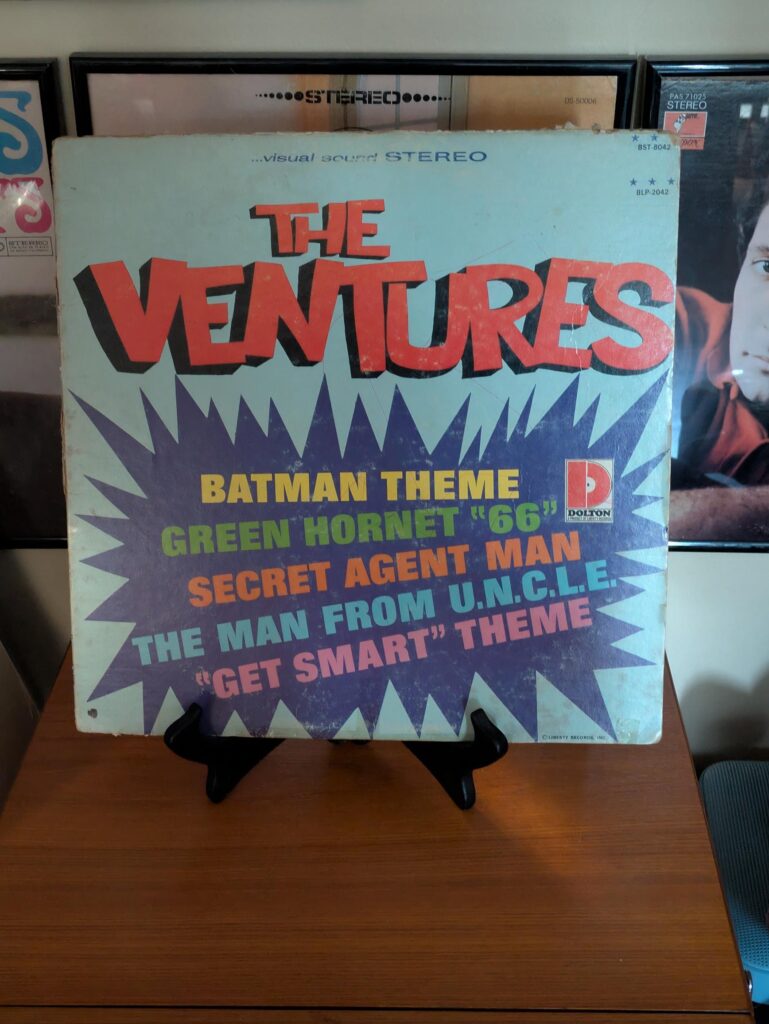
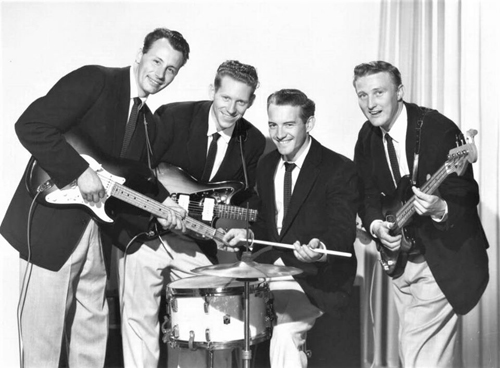
Just North of Peterborough, in the small rural town of Fowlers Corners, sits a massive old barn just off of Highway 35, connecting Peterborough with Lindsay. The most distinctive landmark in the small village, the barn is currently the home of Craftworks and Antiques at the Barn, and is one of my favorite places in all of the Kawarthas. The biggest antique warehouse in the area, the ground floor of the barn is filled with antique vendor booths which you can spend hours in, and each visit is like a unique treasure hunt. But more importantly, “The Barn,” as local residents know it as, has multiple vinyl vendors and I’ve probably bought more records there than anywhere else over the past decade and a half. But “The Barn’s” history of being a hot spot for treasure hunters and vinyl pickers goes back much further than when Craftworks bought it. When I was growing up in the 1980’s, the big old, renovated barn housed a Bingo Hall, and on the weekends when the games weren’t being played, flea market vendors would set up individual booths inside of the building and all through the surrounding grounds to hock their wares. It was a favorite destination for my family, who would often spend Sundays there. Going to “The Barn” was always exciting to me, and it was definitely where I acquired my eternal love for flea markets and secondhand stores. Not surprisingly, this is where I purchased my first second hand vintage record.

I can still picture in my mind’s eye being on the second floor of the barn which housed the Bingo hall, and precariously maneuvering through a long row of tables where a vendor had placed rows of milk crates full of records. Now, I was probably about eleven years old, and while I was following music by then, I was not obsessively buying records yet. I had not yet discovered the joy of picking through crates of records, and looking for vinyl was not my prerogative. But as I journeyed down the aisle, from the corner of my eye I noticed at the front of one of the crates was an album cover with one word that caught my attention! “Batman!” That was all that needed to be said to have me sold, and I got my father to reluctantly give me my allowance money, and I bought the record from the vendor. I don’t know what I paid for it. Maybe fifty cents. Perhaps a dollar. It wasn’t very much.

The record was by The Ventures, but it didn’t matter to me. I was in it for “The Batman Theme,” and that was enough to take my money. But in the years to come, that Ventures album became one of the most important records of my childhood. For years I played the hell out of that record, be it on my little childhood stereo in my bedroom, or from the bigger stereo system in our dining room. Yet, despite constant play, that record maintained its shape and I own it to this day. Pulling it out of the stacks this week and laying it on my turn table for the first time in years, I find it astonishing that it doesn’t have a skip, a scratch, a crackle or a scuff and it sounds just as good as it did on the day I bought it. But even more comforting is how each track on the record wraps around my heart like a warm embrace. I know every strum, riff and note on this album, and it’s like an old, cherished friend from another time and place. To say the least, it was allowance money well spent.
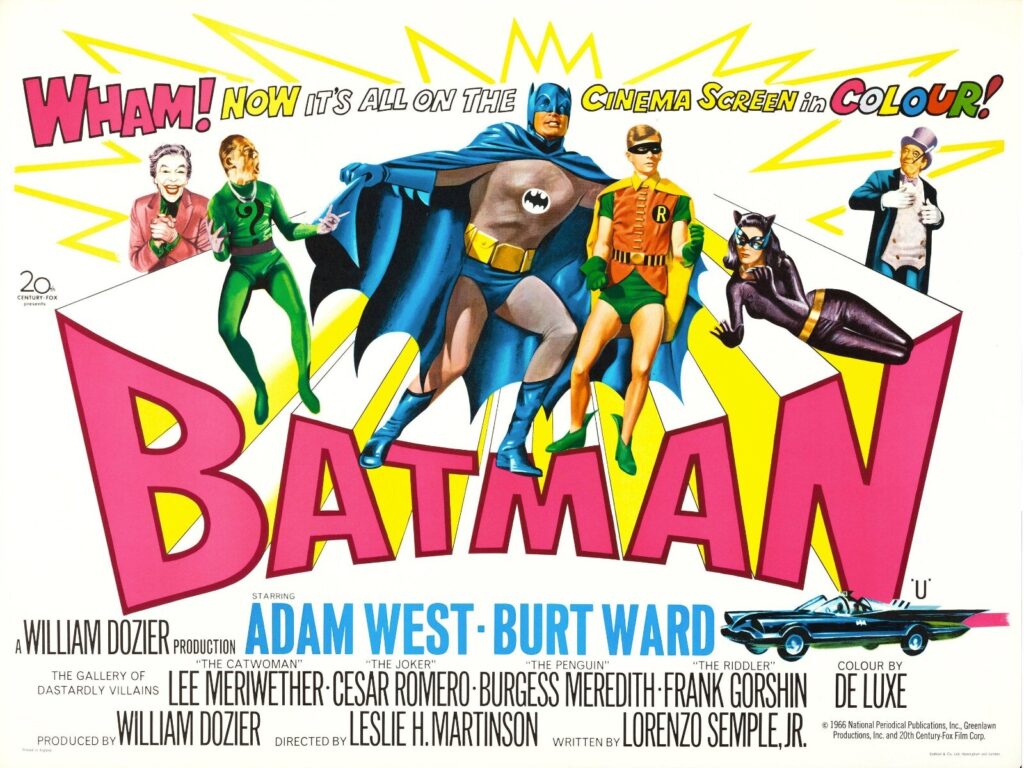
Now I had no idea who The Ventures were, but at age eleven I was crazy about DC Comics, and that meant Batman! Like a lot of kids, I grew up loving superheroes, and via their appearances on the animated series “Super Friends,” Batman and Robin were two of the characters that I was aware of long before I had the ability to even form memory. As a result, the Dynamic Duo has always been a part of my existence. But things changed dramatically for me around 1983 when II saw the 1966 feature length Batman movie one night on television. Starring Adam West and Burt Ward as the famous costumed crimefighters, the film was a bright and colorful action-comedy, filled with provocative villains, imaginative vehicles, and outrageous situations. Although silly and juvenile in nature, I was only eight years old, which pretty much made me the perfect age for the film. With Batman and Robin frolicking through my dreams that night, the next day I had my father drive me to a local corner store and had him buy me a Batman comic. The comic book version was much darker in tone than the movie had been, but it was the beginning of a decades long love for comic books as a medium, and still today I love my costumed comic book heroes.
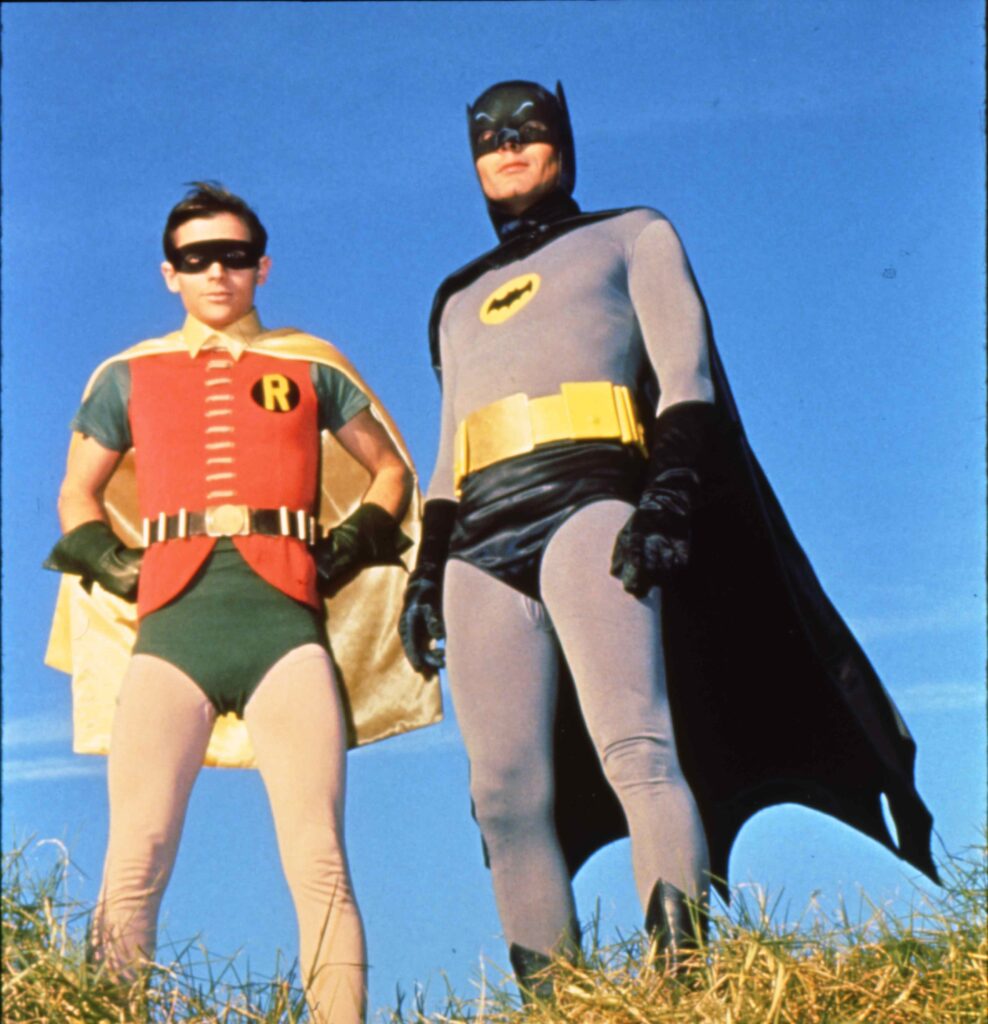
Eventually the Batman television reruns started to air after school on WUTV-29 out of Buffalo, New York. As a devoted comic book fan, I rushed home from school every day to watch each and every episode of it and despite it being a complete send up, I took the show pretty seriously. I was too naive to be in on the joke and didn’t really understand that the show was a comedy. I just saw Batman and Robin and all their friends and foes, and I thought it was pretty cool. I loved the characters, the guest villains, the gadgets, the cliff hangers, the cartoon sound effects like “ZONK” and “BIFF” and “POW” and, of course, I loved that zippy theme song! One of the most recognizable television theme songs in the history of entertainment, “Na na na na na na na na, Batman” became far more than just nonsense lyrics to my generation. When I was growing up it was so iconic that it became a battle cry for child play, in the same vein of “This is a job for Superman,” “It’s Clobberin’ Time” or “Avengers Assemble.” To have “The Batman Theme” on a record to listen to absolutely any time I wanted to hear it was a golden commodity to me, and as a result The Ventures recording of it became my ultimate version.
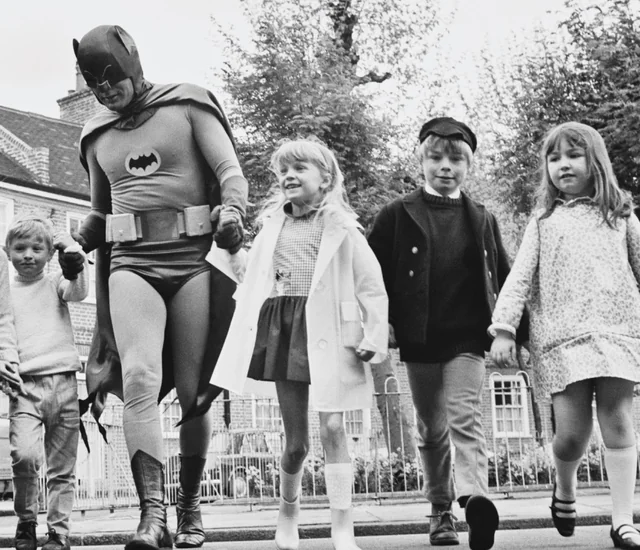
When Batman’s television adventures made its debut on ABC-TV in January 1966 the show was an instant hit. As soon as it aired “Batman” was in the top ten of the Nielsen ratings, and within weeks entered the top five. Starring Adam West as Batman, Burt Ward as Robin and a rotating rogues gallery of Hollywood stars playing the weekly bad guys, most notably Caesar Romero as Joker, Burgess Meredith as The Penguin, Frank Gorshin as The Riddler, Julie Newmar as Catwoman and Vincent Price as Egghead, the show was a zany tongue in cheek farce painted in bright primary colors like a living Roy Lichenstein painting. Appealing to kids who loved it for its action packed adventures, while entertaining the adults who wondered what Hollywood heavy hitter would be showing up on the show next, “Batman” was an unusual show that actually aired twice a week – with part one finishing on a cliffhanger on Wednesday night, and the continuation airing on Thursday. Keeping viewers at home for two consecutive nights was a huge achievement for the network, but the popularity of the show kept viewers wanting more, and soon an entire side industry of Bat products flooded stores. If you could put Batman on it, Bat fans were going to buy it. From the usual things such as trading cards, action figures, model kits and lunch boxes, to more unusual products such as bubble bath, orange juice, soap dishes and toothbrushes, Batman was on everything. So, with a Batman marketing boom taking place, it wouldn’t be long before record labels got in on the racket, and in 1966 an entire side industry of Batman records started to flood record stores. There were records about Batman, novelty singles recorded by the stars of “Batman,” but most notably, there was that “The Batman Theme.”
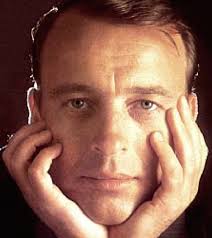
“The Batman Theme” was written by composer/arranger Neal Hefti, who had previously worked with Count Basie and Frank Sinatra, and composed soundtrack music for films such as “Barefoot in the Park,” “The Odd Couple” and “Duel at Diablo.” Inspired by the John Barry’s music from the James Bond films, Hefti wanted to put a modern surf guitar vibe behind the track. A twelve bar blues progression played over only three chords created the simple, but distinct guitar riff, which is followed by a blasting horn section and a vocal group singing the minimalistic lyrics. It was a simple composition, but proved to be instantly memorable. To create the theme music for the television series, legendary arranger and band leader Nelson Riddle was brought in to work with The Wrecking Crew, including key performers Tommy Tedesco on guitar, Carol Kaye on bass and Hal Blane on drums. Meanwhile, the vocal track was supplied by the superstars of studio session performers, The Ron Hicklin Singers. The result was an instant classic theme song that is still beloved today.
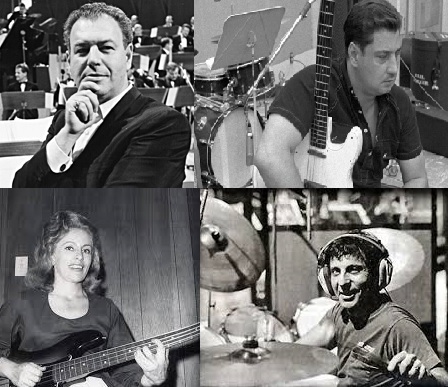
With the instant popularity of the series taking hold on the public, a soundtrack recording of the “Batman” series, with the original Nelson Riddle/Wrecking collaboration, and featuring dialogue tracks by the stars of the show,, was released shortly after the debut of the television series by 20th Century Fox Records. Weeks later Neal Hefti himself released a version with his own orchestra on an album titled “Batman Theme and 11 Hefti Hits” via RCA, and his version of the theme was the first to hit the Billboard charts, hitting the #35 position in March 1966. His recording would also earn him two Grammy nominations in the categories of “Best Instrumental Theme” and “Best Instrumental Arrangement.”
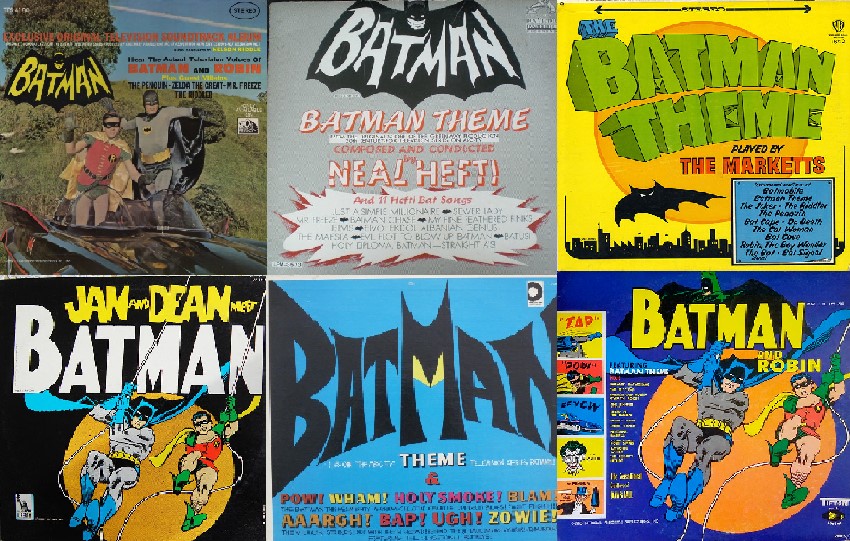
However, Hefti’s recording of “The Batman Theme” wasn’t the only time that year that the song would show up on the Billboard charts. Only a few weeks later, Hollywood based guitar group The Marketts surpassed Hefti’s version on the Billboard charts when their version peaked at the #17 spot. Later still surf duo Jan and Dean, who primarily performed as vocalists, would release an entire Batman themed album of their own, with their version of “The Batman Theme“ reaching #66 on the charts. As the year continued, it seemed like everyone was taking their turn at recording “The Batman Theme.” A wide range of name artists from various genres put their stamp on it, including Al Hirt, The Who, The Kinks, Henry James, David McCallum, Maxwell Davis, The Gallants, Link Wray, Al Caiola, Sandy Nelson and Sammy Kaye. But the theme was also recorded by a host of studio groups, orchestras and garage bands that nobody ever heard from again. With a quick search I found versions of “The Batman Theme:” by obscure entities such as The V Rangers, The Maskers, The Bat Boys, Bruce and the Robin Rockers, The Revengers, The Avengers, The Ettori Cenci Guitar Trio, Dan and Dale, The Nashville Five, The Riddlers, The Jokers, The Dynamic Batmen, Bob Kunama md the In-Men, Peter De Angelis and the Hollywood Brass, The Karvals, Aunt Marie and the Convicts, The Clee-Shays, The Ray Martin Orchestra, Les and Larry Elgert….and that was just for 1966. Even more unknown artists took their turn recording it in 1967! The result was that “The Batman Theme” became the most recorded song of the year. Still today, very few songs have had that many different versions released in a single year.
But there was one important version of “The Batman Theme” I haven’t mentioned yet. The one I hold the closest to my heart. The Ventures recording of “The Batman Theme.”
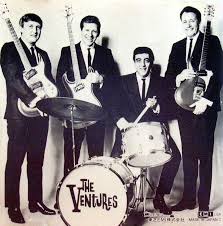
Not only was 1966 a good year for Batman, but it was also a good year for The Ventures. Formed in 1958 by Don Wilson and Bob Bogle, by the middle of the 1960’s The Ventures had built themselves up to being one of the most popular guitar groups in the world. Pioneers of the surf sound and the originators of the fuzz guitar, The Ventures were stalwart performers, and by releasing a new record on the market every couple of months, the group quickly managed to sell over a hundred million albums and got fourteen singles in the Billboard Top 100 between 1960 and 1970. Still today, The Ventures are considered the most successful instrumental group in the history of rock n’ roll.
With their classic lineup of Nokie Edwards on lead guitar. Don Wilson on rhythm, Bob Bogle on bass and Mel Taylor on drums, 1966 saw The Ventures release four studio albums that year which all charted on the Billboard Sales Charts – “Where the Action Is!,” “Go with The Ventures,” “Wild Thing!” and “The Ventures.” “The Ventures,” the group’s 21st album, would be the only album thet they released without an official title, thus essentially making it their self-titled album by default. However, for the Japanese release, the album was titled “The Ventures Play The Batman Theme,” which is what the album is most commonly referred as.
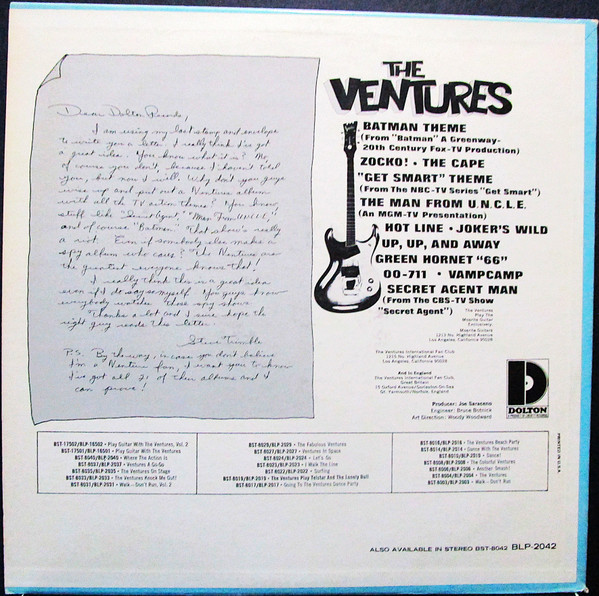
Often putting out albums that contained overall themes, the idea for “The Ventures” came from a letter written by a fan named Steve Trimble, which was reprinted on the back of the LP for the world to read. In the letter, Trimble suggested putting out an album of all the “television crime fighting themes,” making special mention to “The Man From U.N.C.L.E.,” “Secret Agent Man” and “Batman” (Trimble notes in his letter “That show is a riot.”). An inspired idea, the turnaround from Trimble’s letter to the release of “The Ventures” must have been quick, because the album was released in March 1966, barely three months after “Batman” first aired on television.
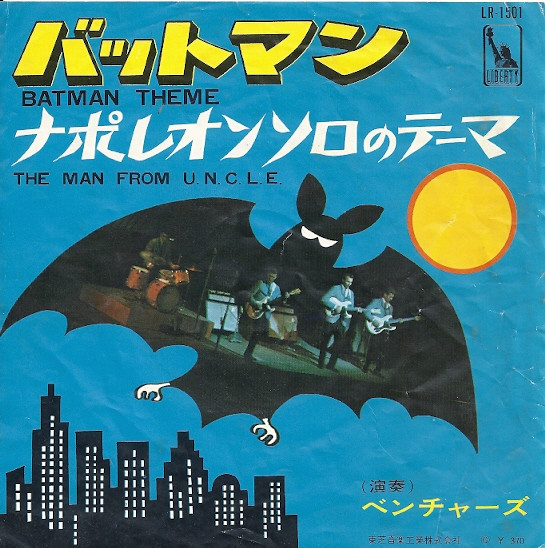
With “The Batman Theme” literally being recorded by everyone who could strum a guitar, it was pretty much a no brainer for The Ventures to put their stamp on it, and they weaved their guitar magic on the composition extremely well, adding their own distinct interpretation to it. Starting the track as a spot on rendition of the Neal Hefti original, The Ventures made “The Batman Theme” their own by going into some original detours in the second half of the track, making it distinctly identifiable as their own version in comparison to the plethora of “Batman Theme” recordings that were in the soundscape. As a result, The Ventures version did not go unnoticed and was the fourth version of “The Batman Theme” to land on the Billboard charts in 1966, making it as high as the #54 position. Meanwhile, The Ventures version would be a massive hit in Japan and Hong Kong, where it topped the Asian charts at #1.
Of course, “Batman” wasn’t the only crime fighting theme on the album. The Ventures put their spin on Trimble’s other suggestions, including a great fleshed out interpretation of “The Man From U.N.C.L.E. Theme,” which had been a Billboard hit for Hugo Montenegro in 1965, and a fairly straight forward take on “Secret Agent Man,” which was the theme for the British spy series “Danger Man,” retitled “Secret Agent” in the US. Only weeks after the release of The Ventures album, the vocal version of “Secret Agent Man” sung by Johnny Rivers, would top the Billboard charts at the #3 spot. The album also included a spirited version of the theme to the spy spoof “Get Smart,” which worked nicely within the confines of the album.
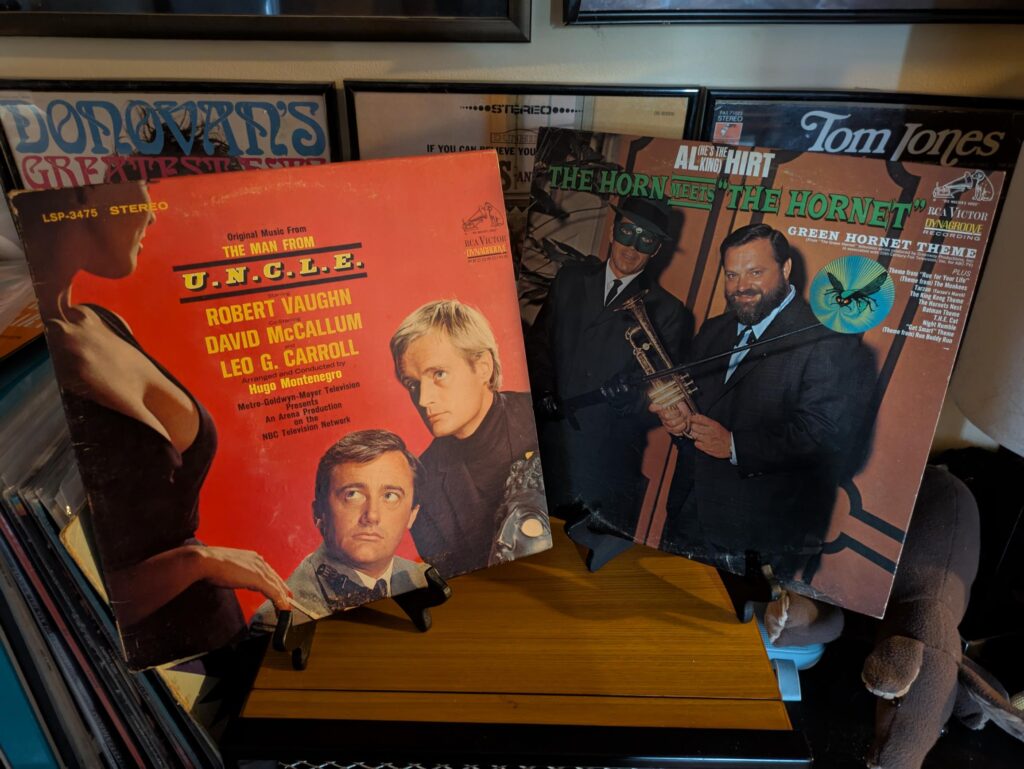
But the most curious addition to the album was what The Ventures called “Green Hornet ’66.” An electric guitar version of Rimsky Korsakav’s “Flight of the Bumblebee,” the theme The Ventures play is from the old radio broadcasts from the 1940’s and 1950’s. Upon the release of “The Ventures,” “The Green Hornet” television series, which was developed by the same production team of “Batman” as a sort of spin off, wouldn’t premier until September 1966, and the series’ theme song, performed by Al Hirt, would be a completely different song. However, with “The Green Hornet” being featured prominently on the album’s cover, one wonders if someone had dropped a hint to The Ventures that The Green Hornet was coming to television screens that fall.
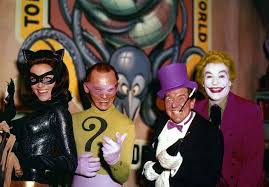
While the famous theme songs by established entertainment properties were obviously the tracks that sold the record, they weren’t the best tracks on the album. As great as they are, the album contains some incredible original guitar tracks written by The Ventures. Yet, despite their superiority, none of those tracks were released as singles nor pushed for airplay, being dismissed by the label as not being as marketable as the known theme songs and are still criminally obscure today.
Even as a Batman obsessed eleven year old who didn’t know who The Ventures even were, I knew that the best track on the record was “The Joker’s Wild.” Opening the number with homicidal laughter, obviously inspired by the comic book villain The Joker, “The Joker’s Wild” has a tinge of darkness to it, and plays out as an ode to colorful crooks, enemy agents and bad guys of all types. Although it has The Ventures signature surf sound, the group is accompanied by a morose vocal track and has a moody quality that would fit nicely into a modern noir or thriller. Still today “The Joker’s Wild” is one of my favorite guitar instrumentals ever recorded by any guitar group. It is one of those forgotten tracks that should have been a hit.
Other strong originals on the album includes “Hot Line,” which combines morse code signals with “surf” sound effects; “Zocko!” and “00-711” which are both inspired by secret agent themes, and some more danceable numbers such as “The Cape” and “Up, Up and Away.” Track after track, each song on “The Ventures” is guitar gold, and a testament to The Ventures’ talent.
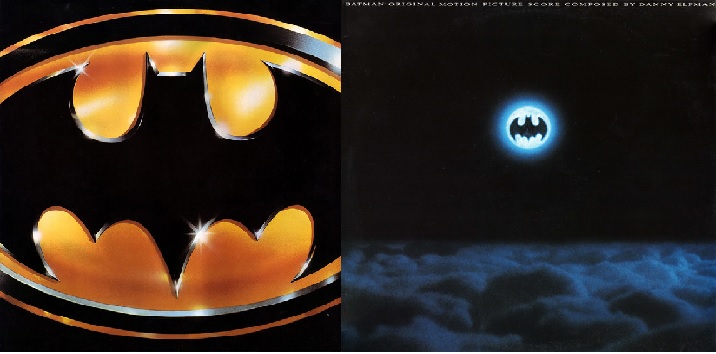
About three years after buying my copy of “The Ventures” that Sunday afternoon there would be another massive explosion of Bat-mania when the 1989 Tim Burton film, starring Michael Keaton, hit theatres. With the tone of the new Batman being closer to the comics that inspired it, the bright colors and psychedelic adventures were replaced by dark shadows and garish violence. But just like in 1966, another wave of merchandising dominated the market, and a new generation of Bat-fans were eager to buy anything that the caped crusader was printed on. This time two Batman albums would be released in conjunction with the film – one by Prince, and another by Danny Elfman, who wrote a new moody symphonic theme for Batman which would go on to eclipse the classic Batman theme in both popularity and iconisim. Do kids even run around singing “Na na na na na na na na, Batman” today? I know it’s been a long time since I’ve heard anybody do that. I’m not saying that the Batman productions since 1989 aren’t better than what had come before, but I know I’m not that interested in rewatching them. A colorful innocence and sense of imagination was lost when Batman went dark. The new sound of Batman was a lot more epic, but it isn’t nearly as fun.
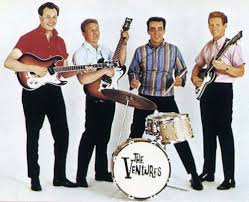
Just like I’d have a lifelong love for DC Superheroes, including Batman and all his friends and foes, after repeated listens of “The Ventures” this past week I realize I’ve had a lifelong love for that album as well. “The Ventures” obviously wouldn’t be my last Ventures album I’d buy. I own over a dozen of their excellent albums in my collection, including their debut and most of their classic albums. But due to discovering that particular Ventures album at a certain time in my life, it definitely became one of the most special pieces of vinyl in my collection, and I can’t think of a Ventures album that I’d rather listen to more. I’m glad I bought it the day I did because, to this day, despite all the record shows and shops I’ve been to, I can’t ever recall coming across another copy of “The Ventures.” I’m not saying that it’s a rare or valuable album I don’t think it is I don’t know why I’ve never seen it again. While my vinyl still plays perfectly, the album jacket has split seams and has probably seen better days, so an upgrade is probably needed. However, the copy I own has been in my life now for nearly forty years, and even if I get a second copy, I’ll never part with my original.



